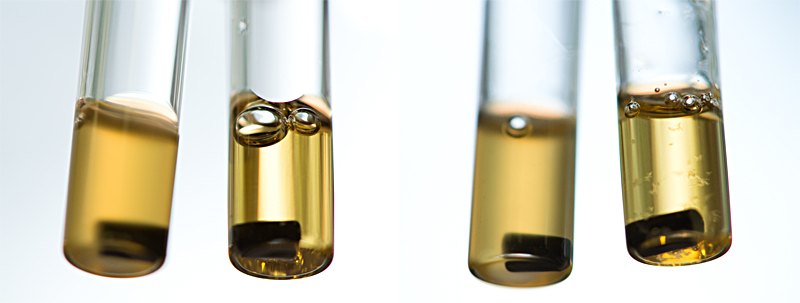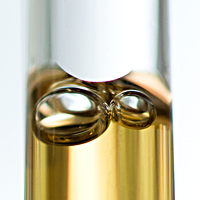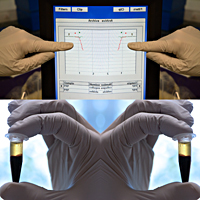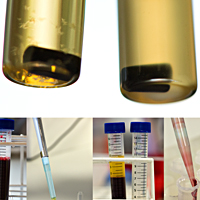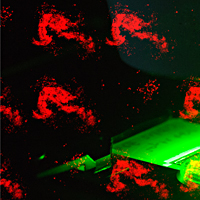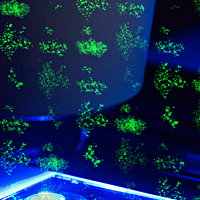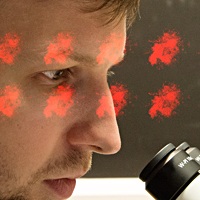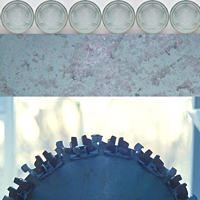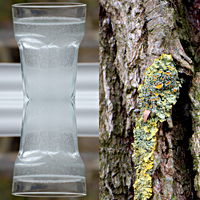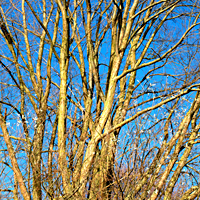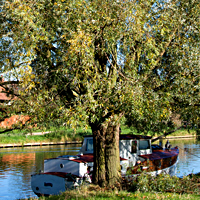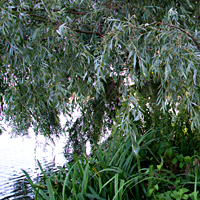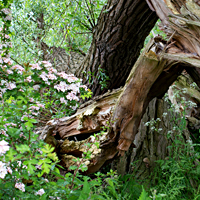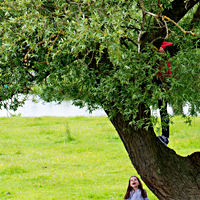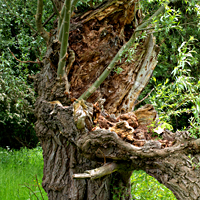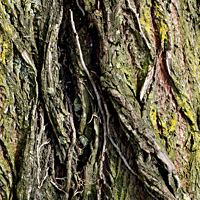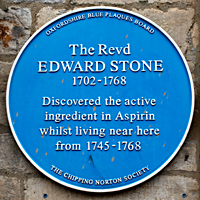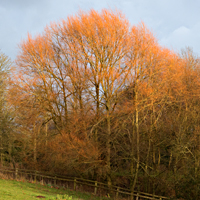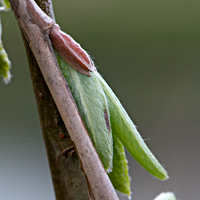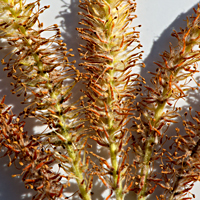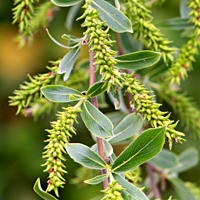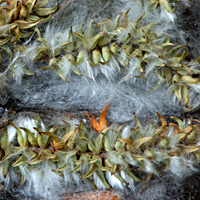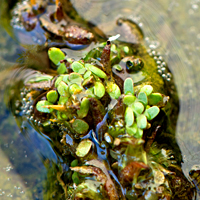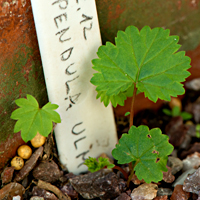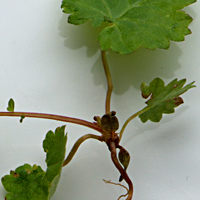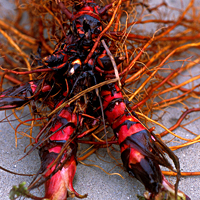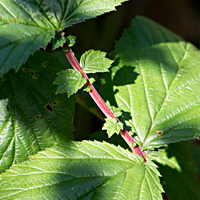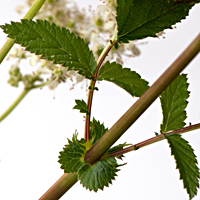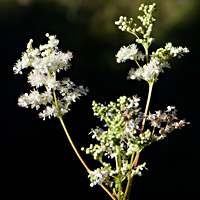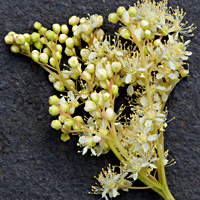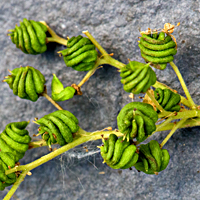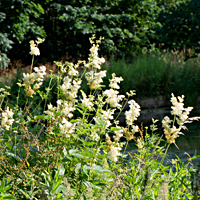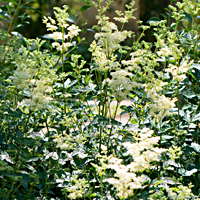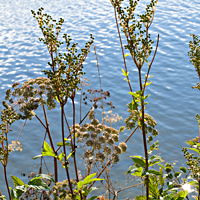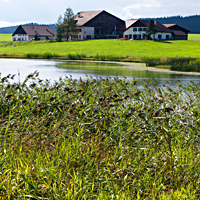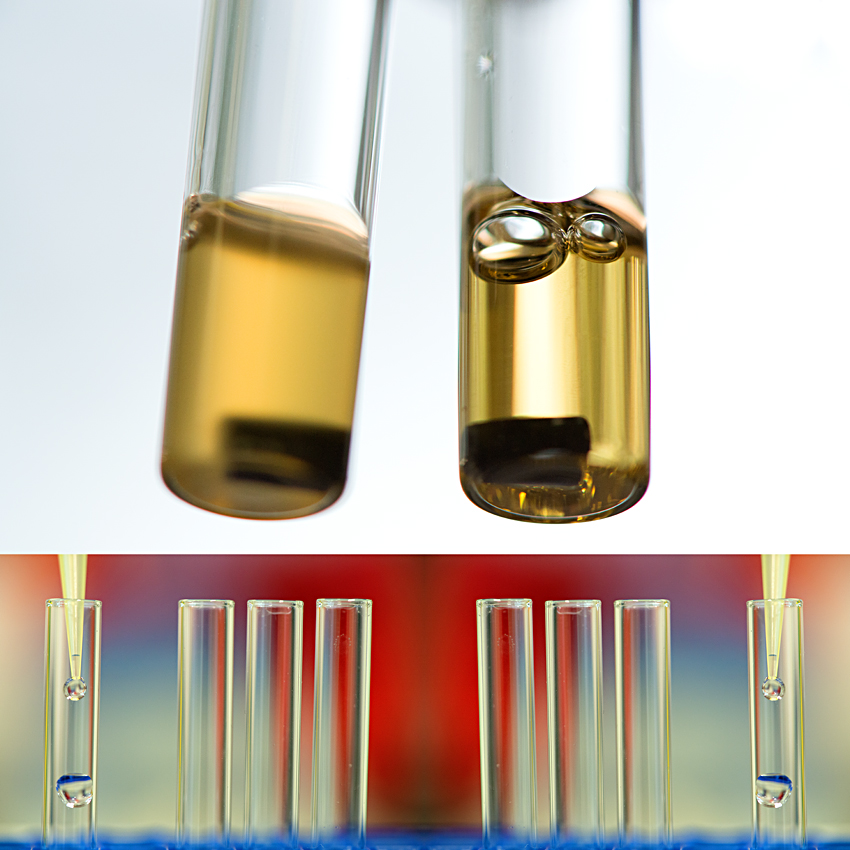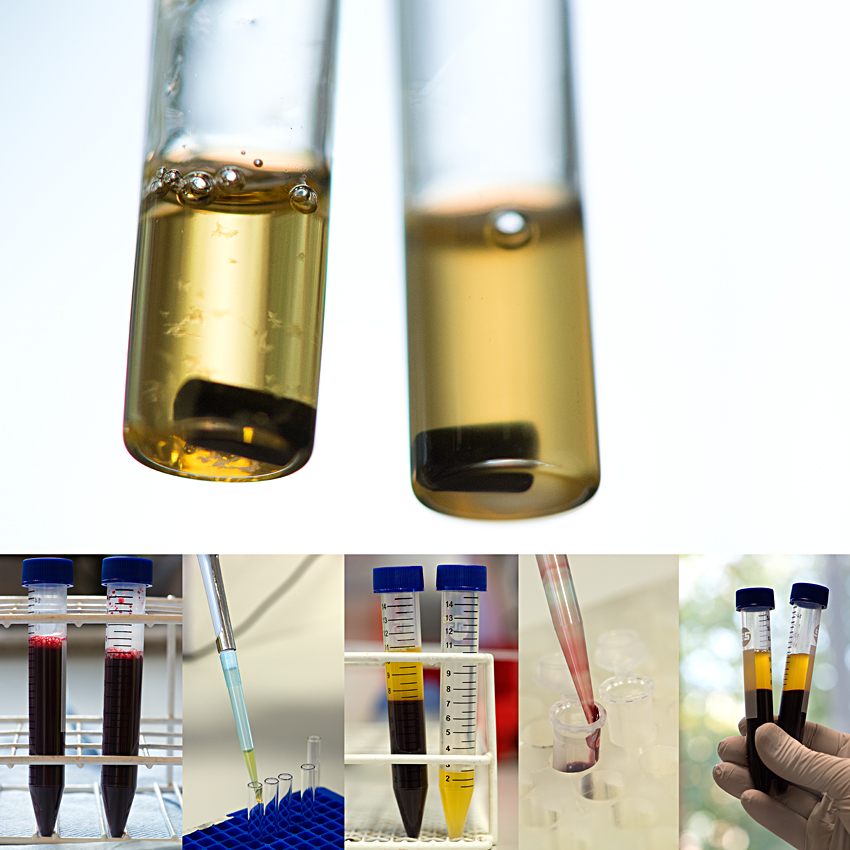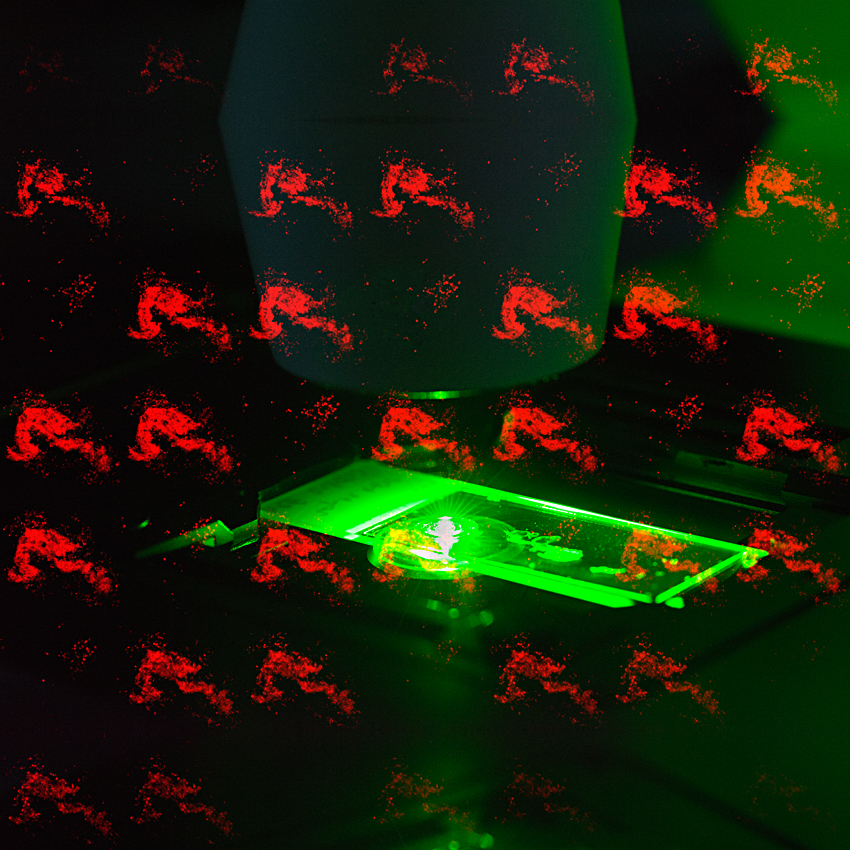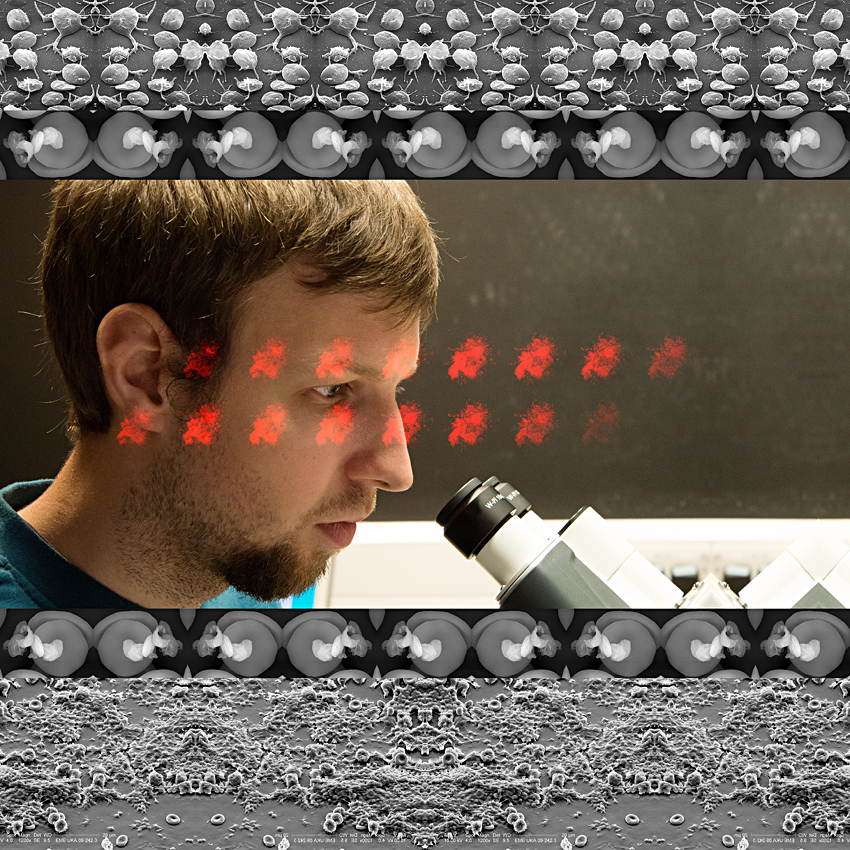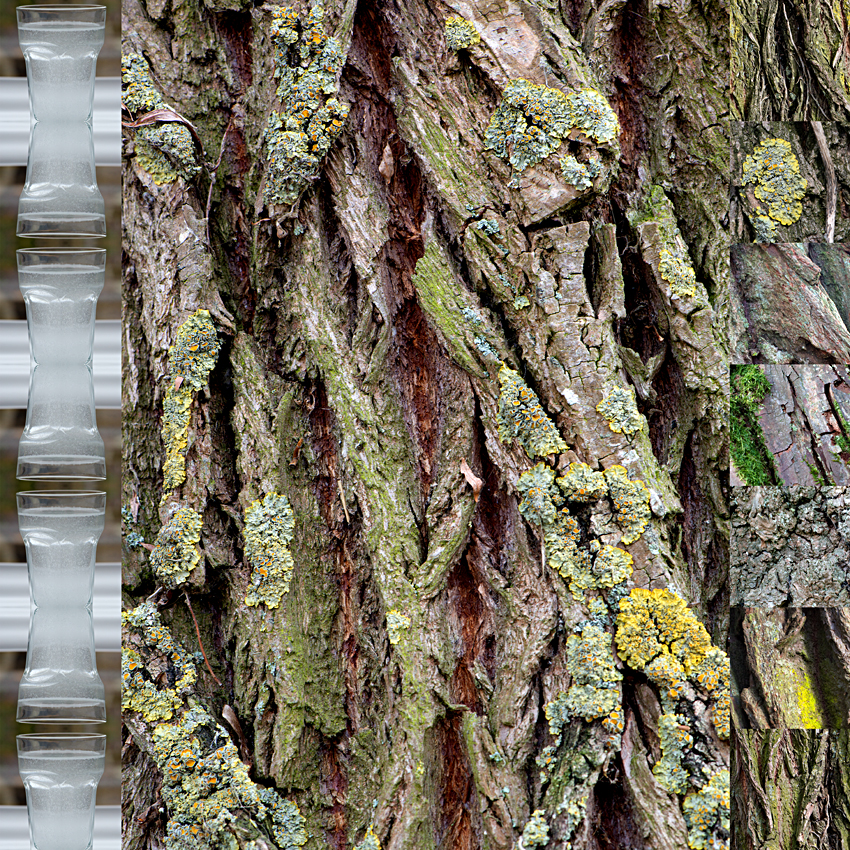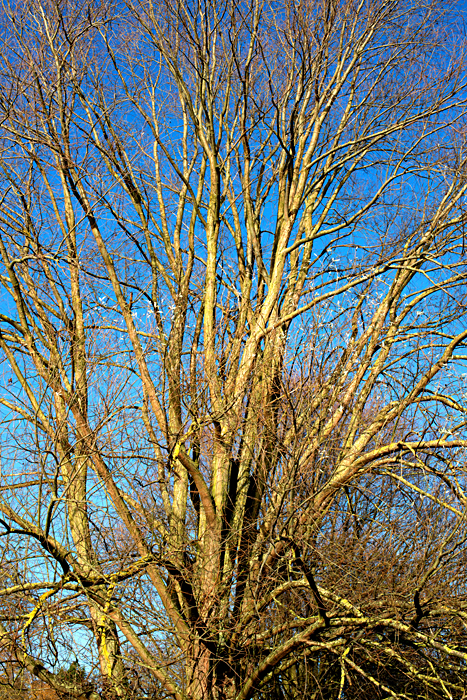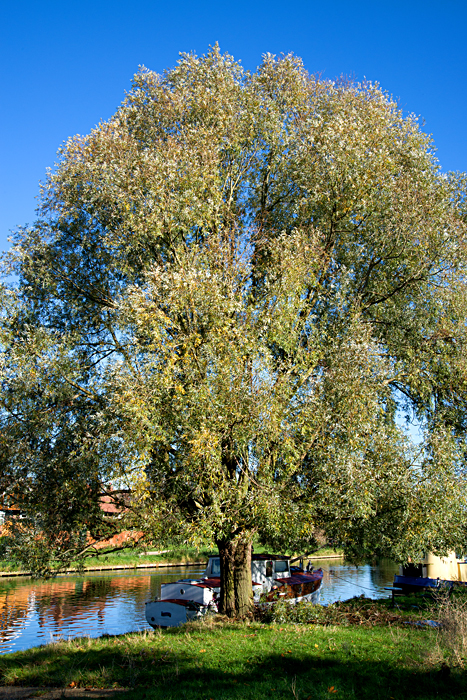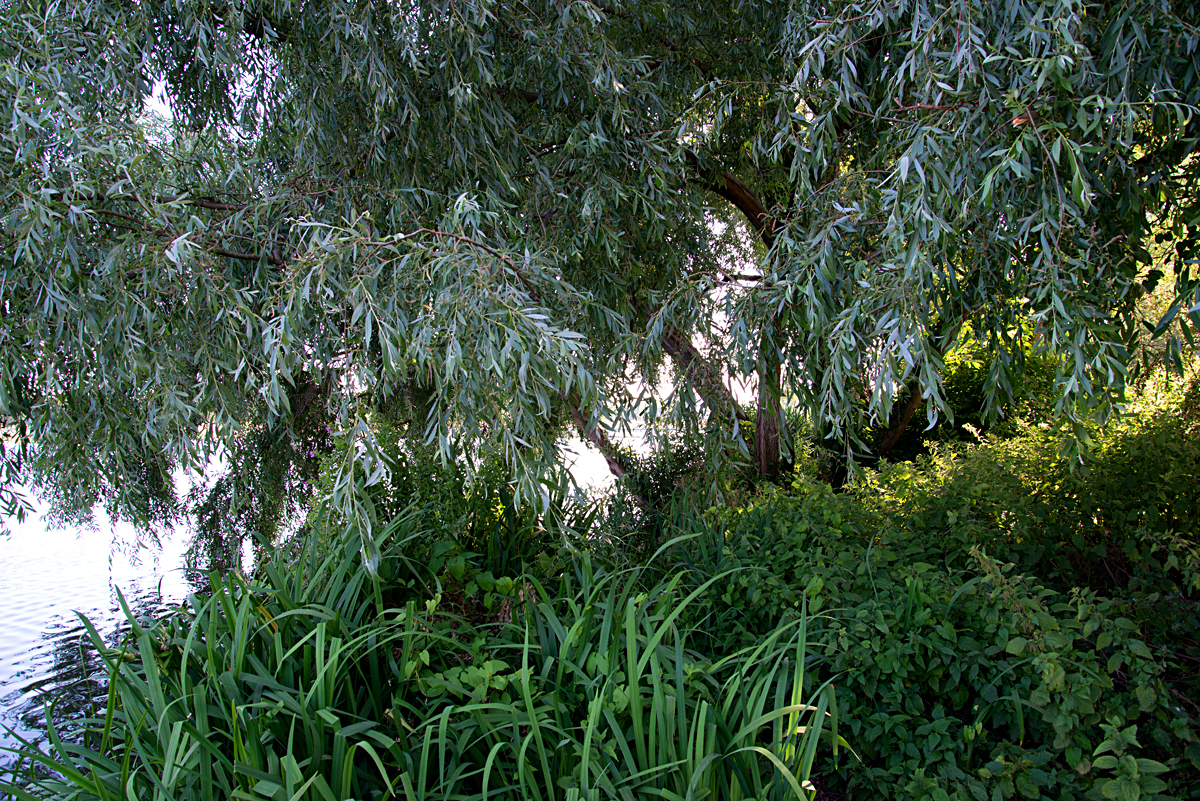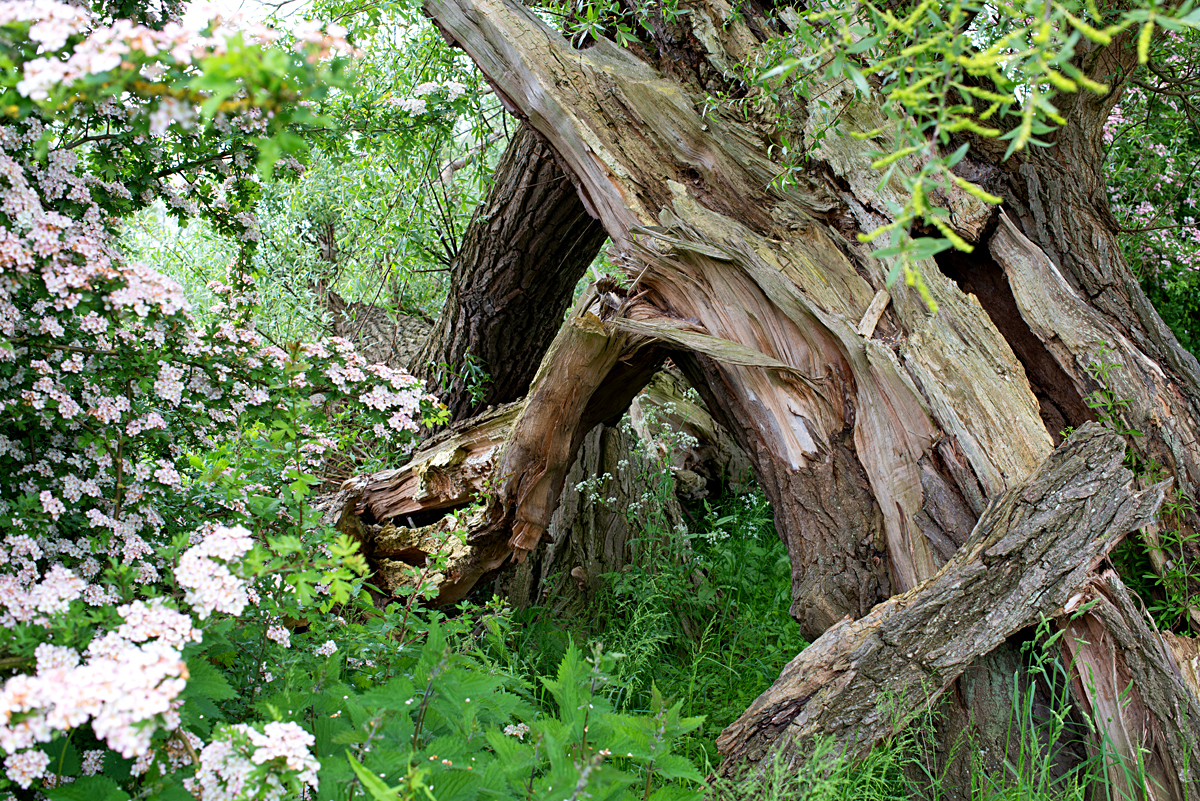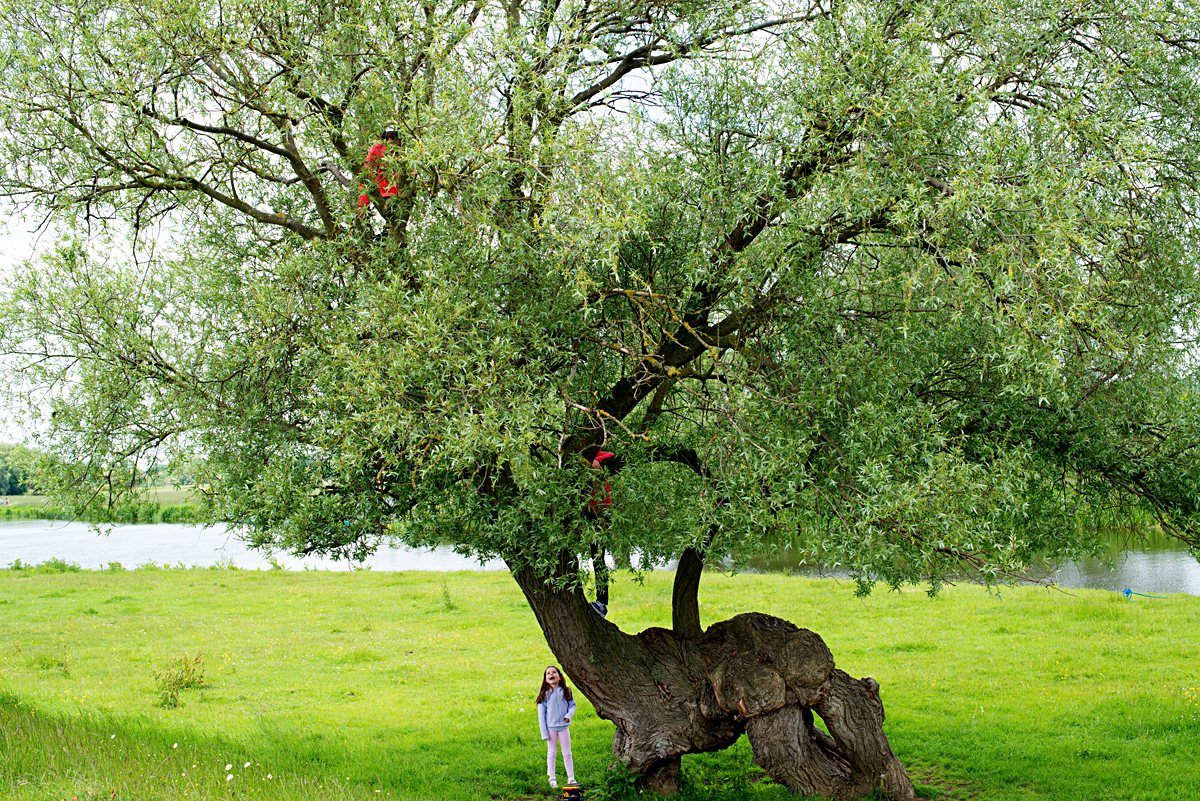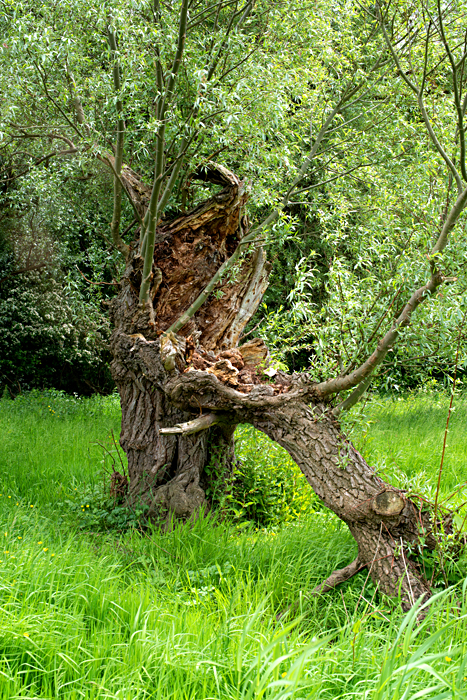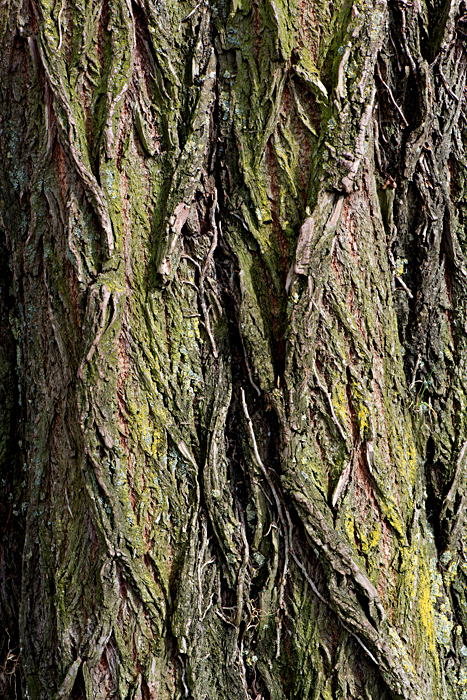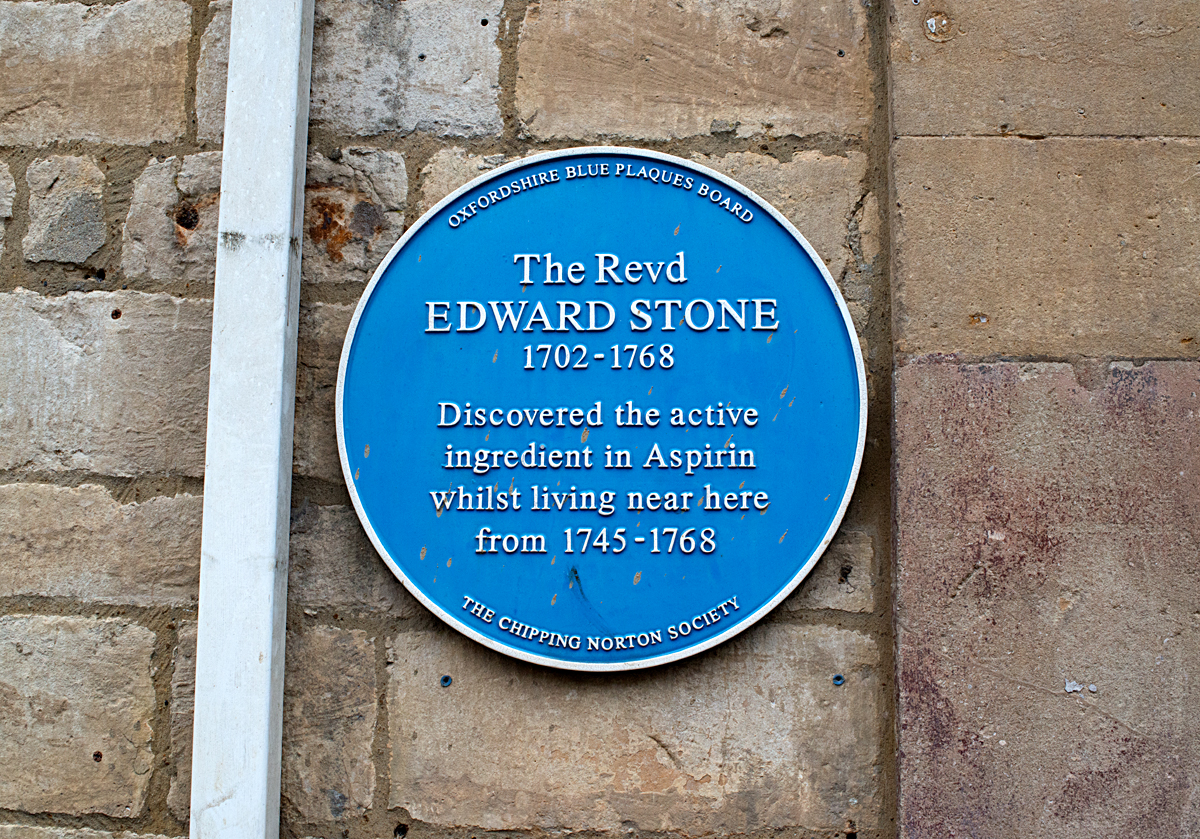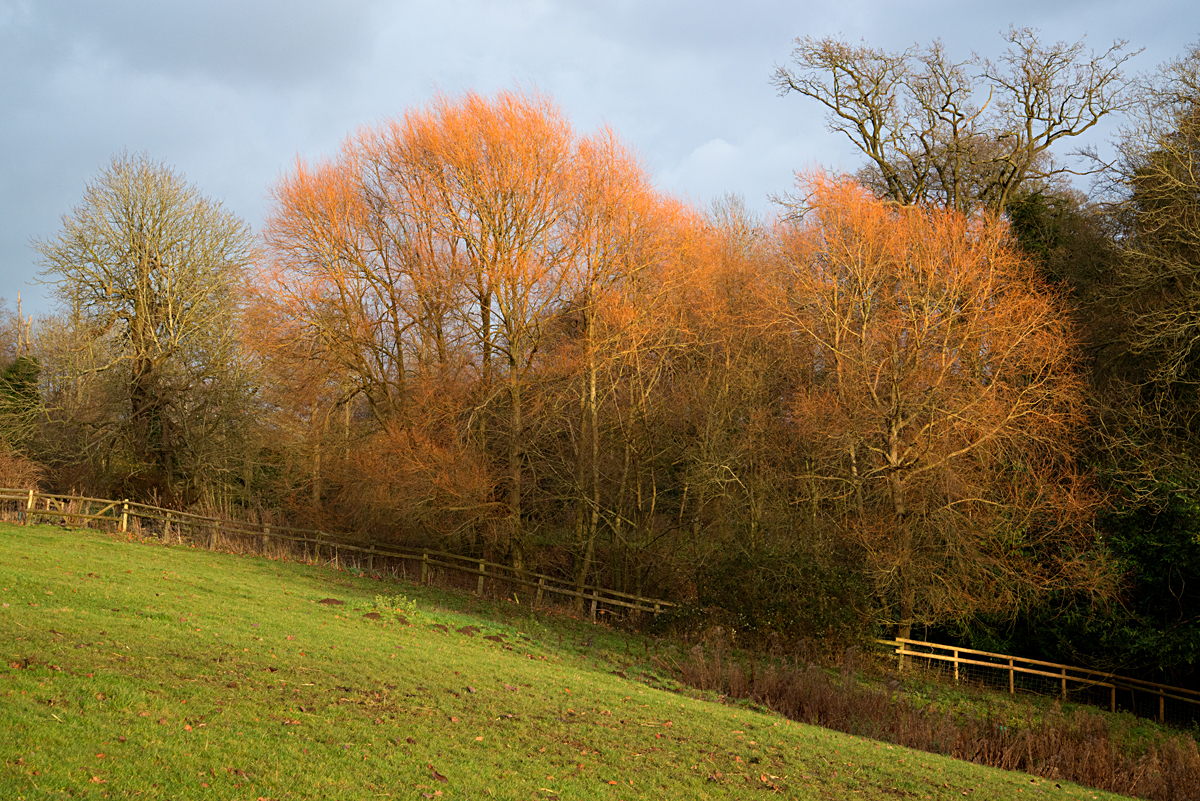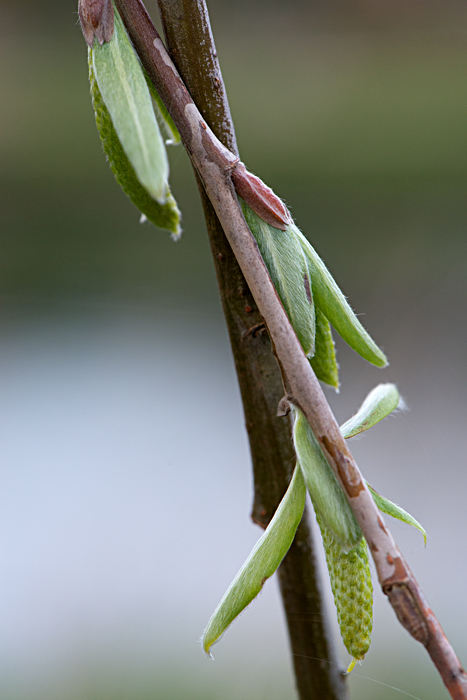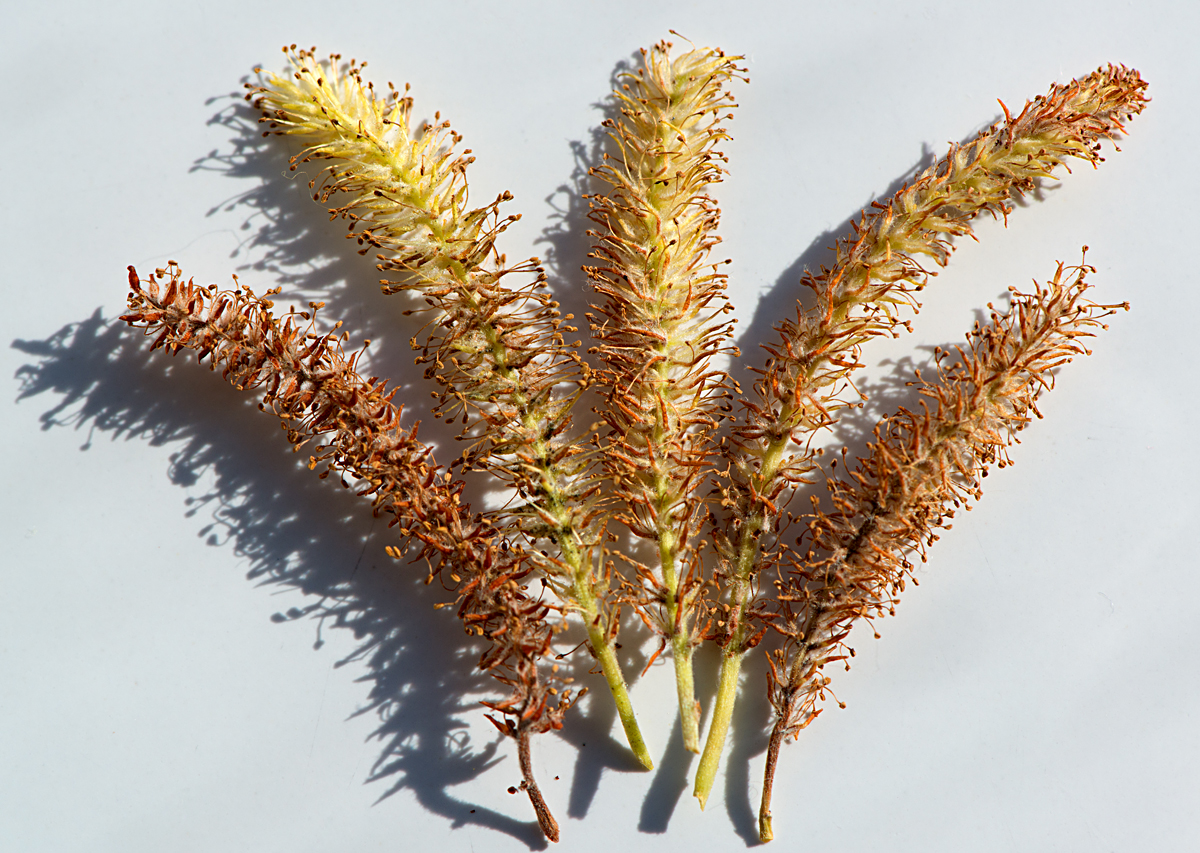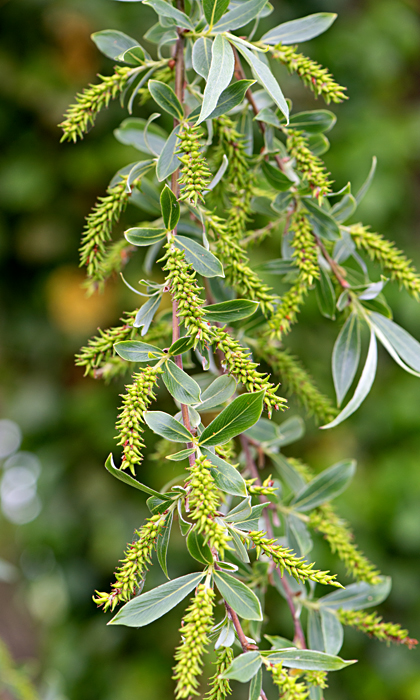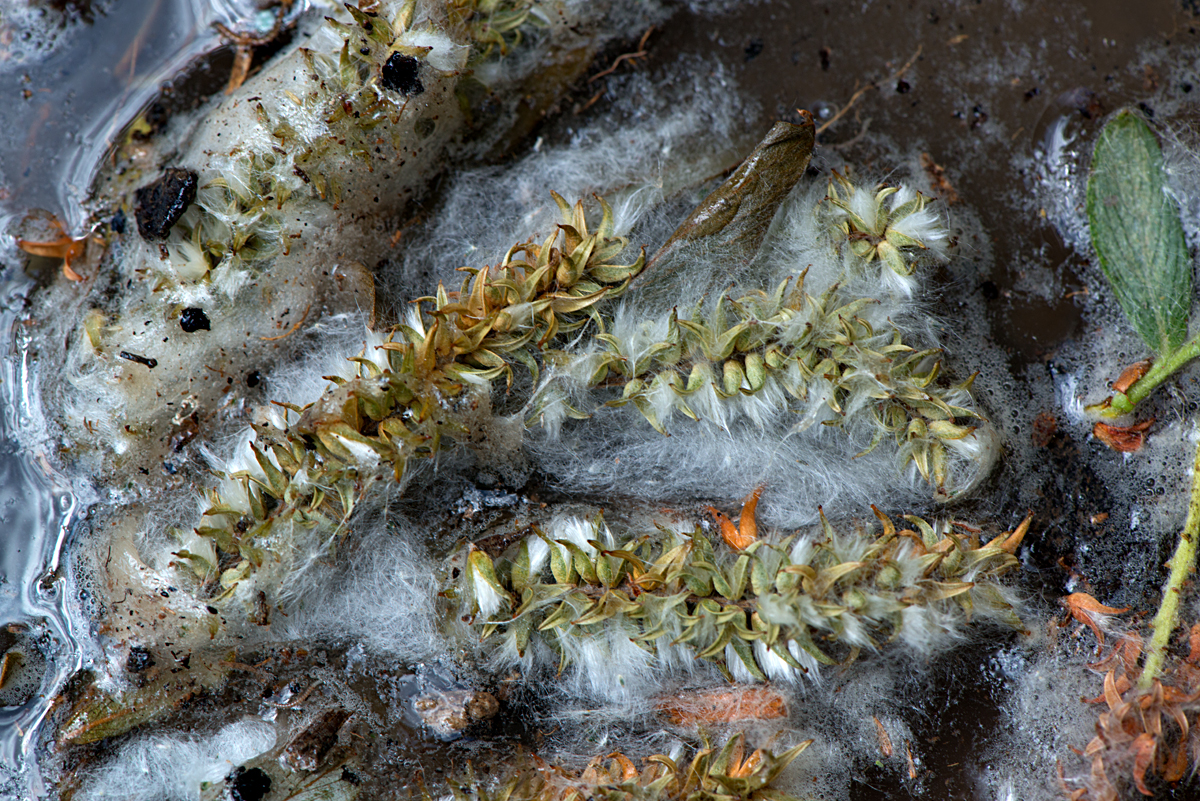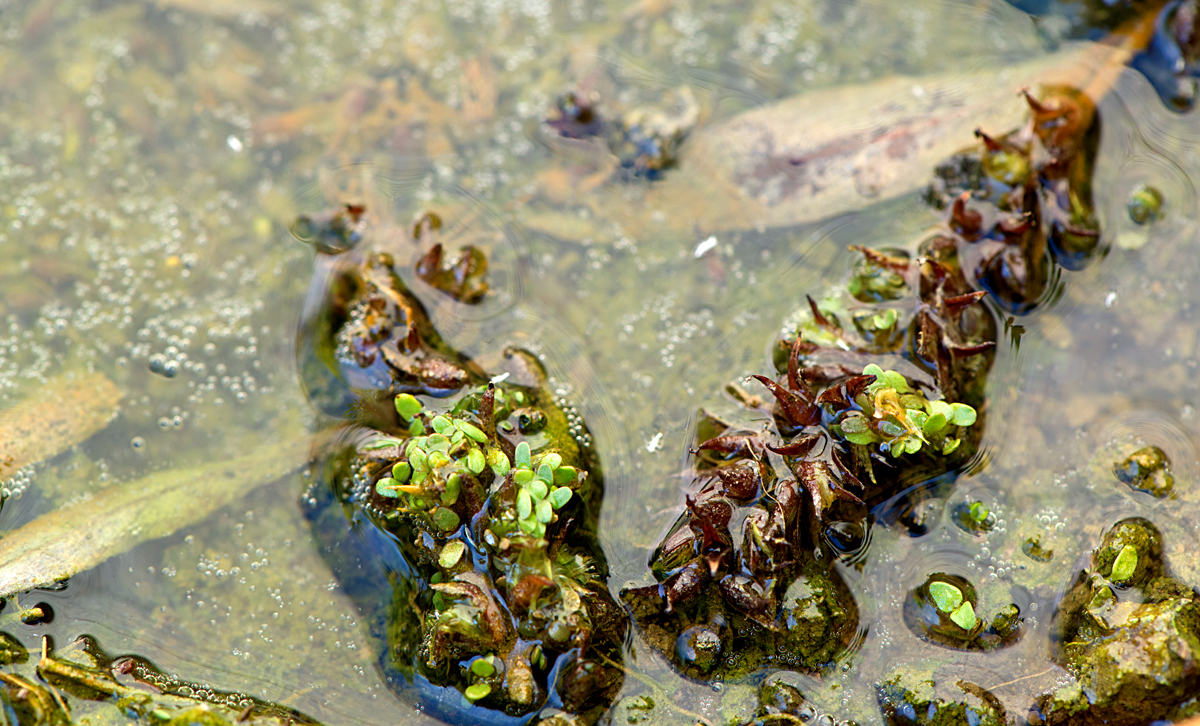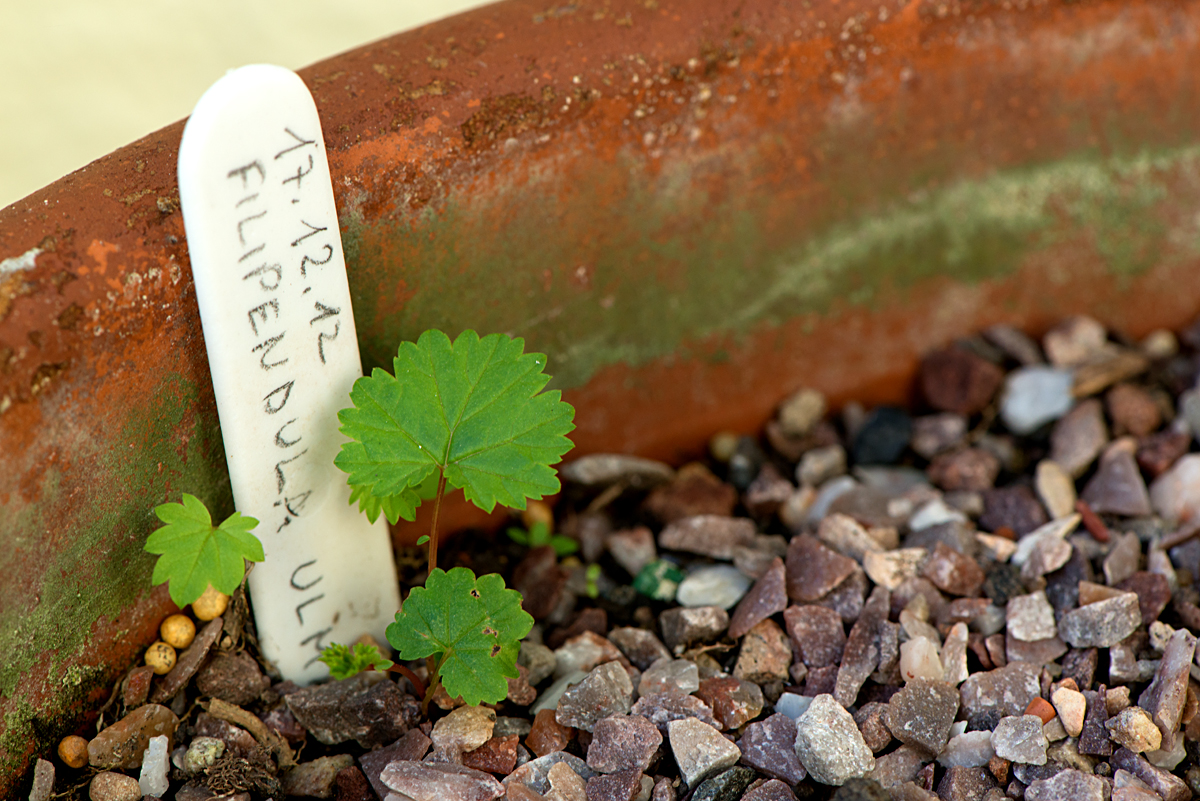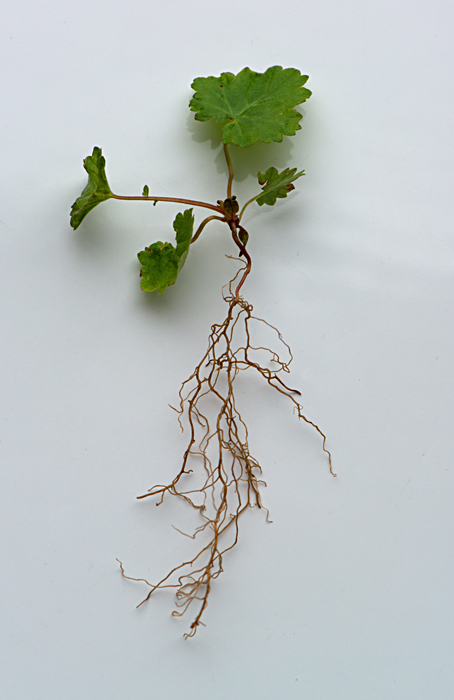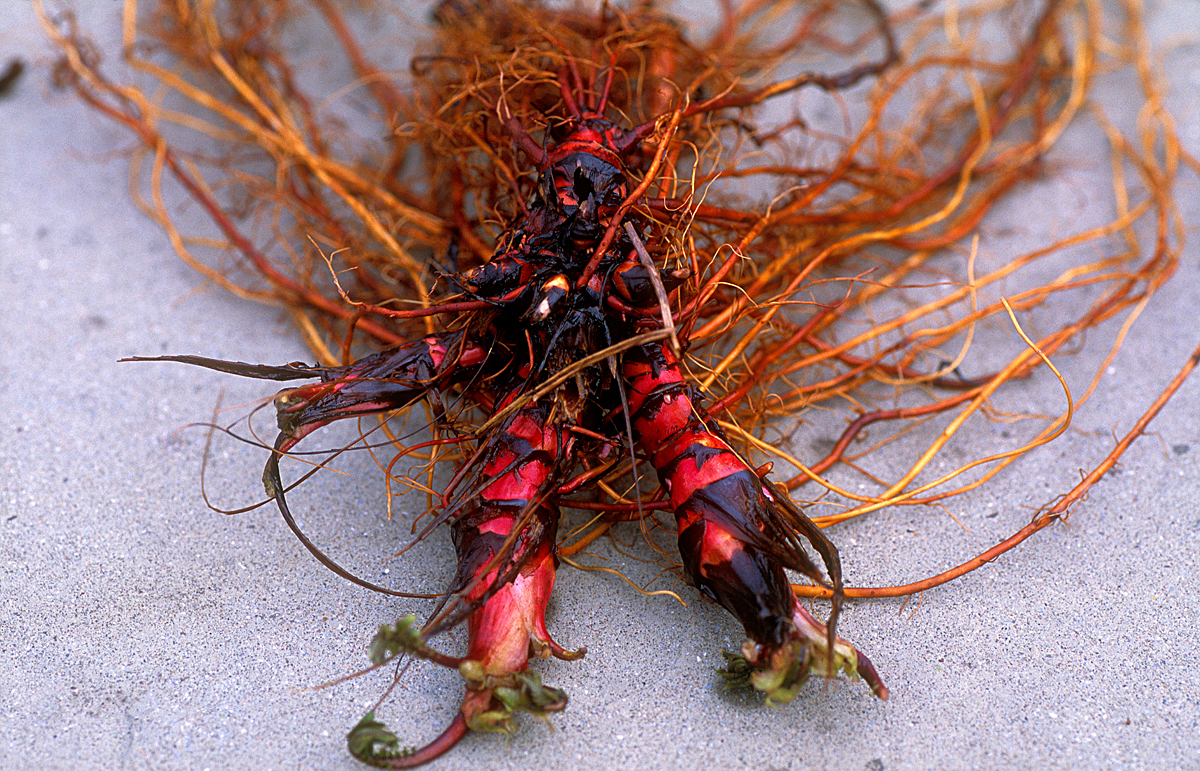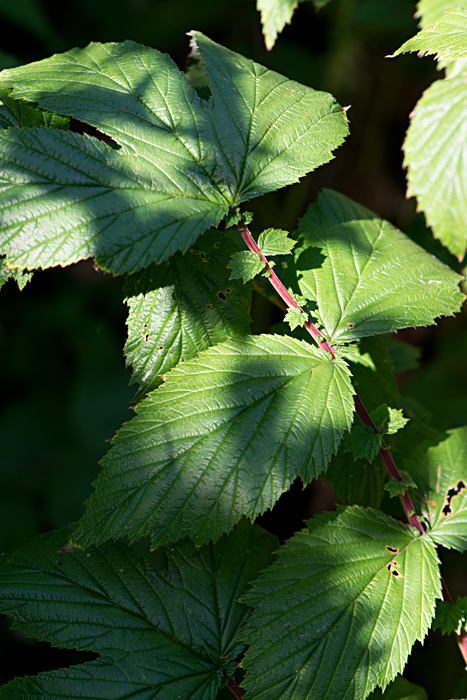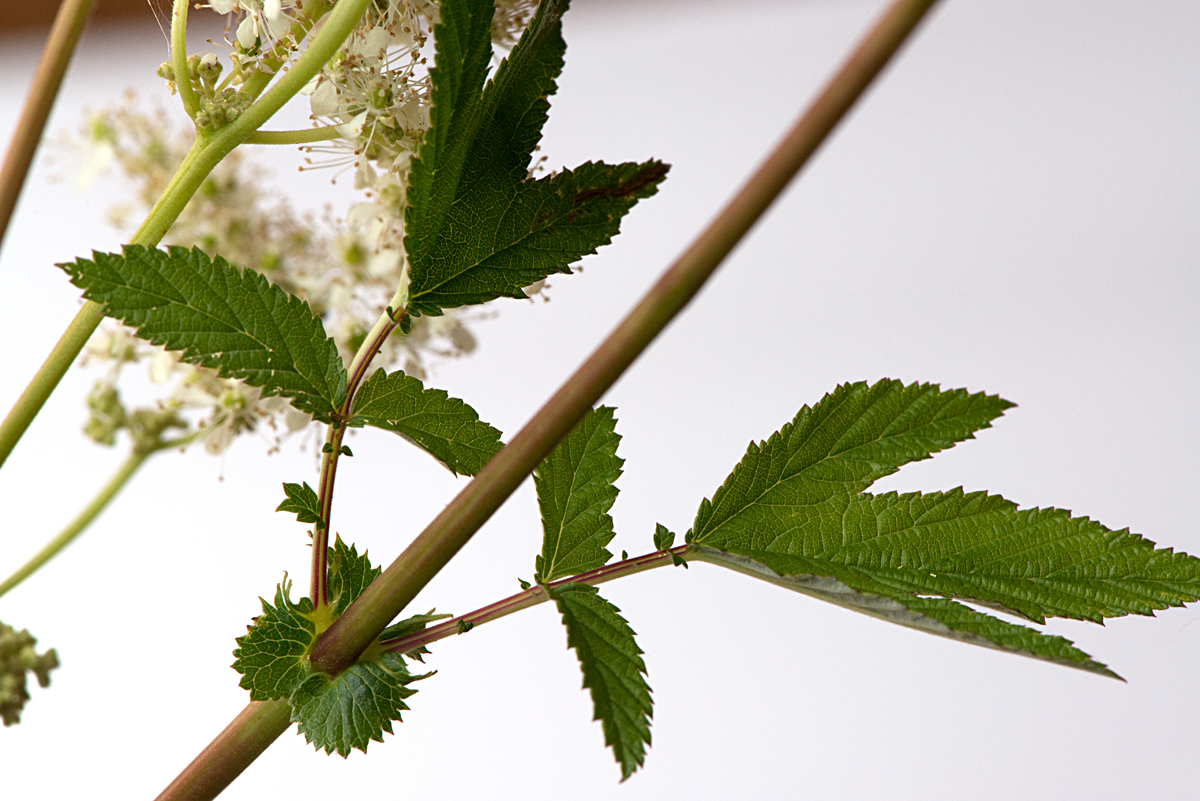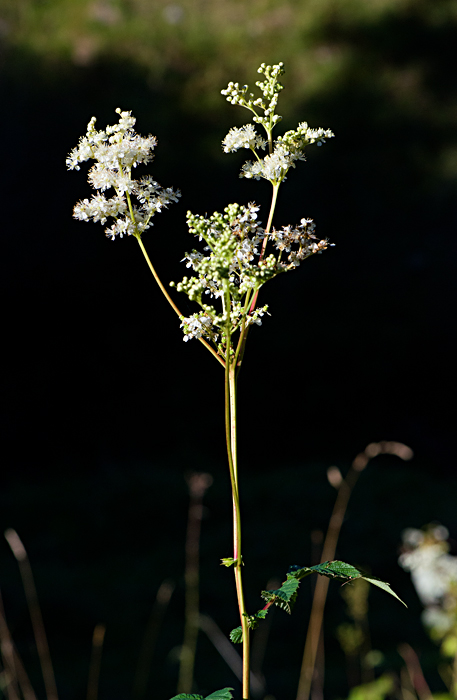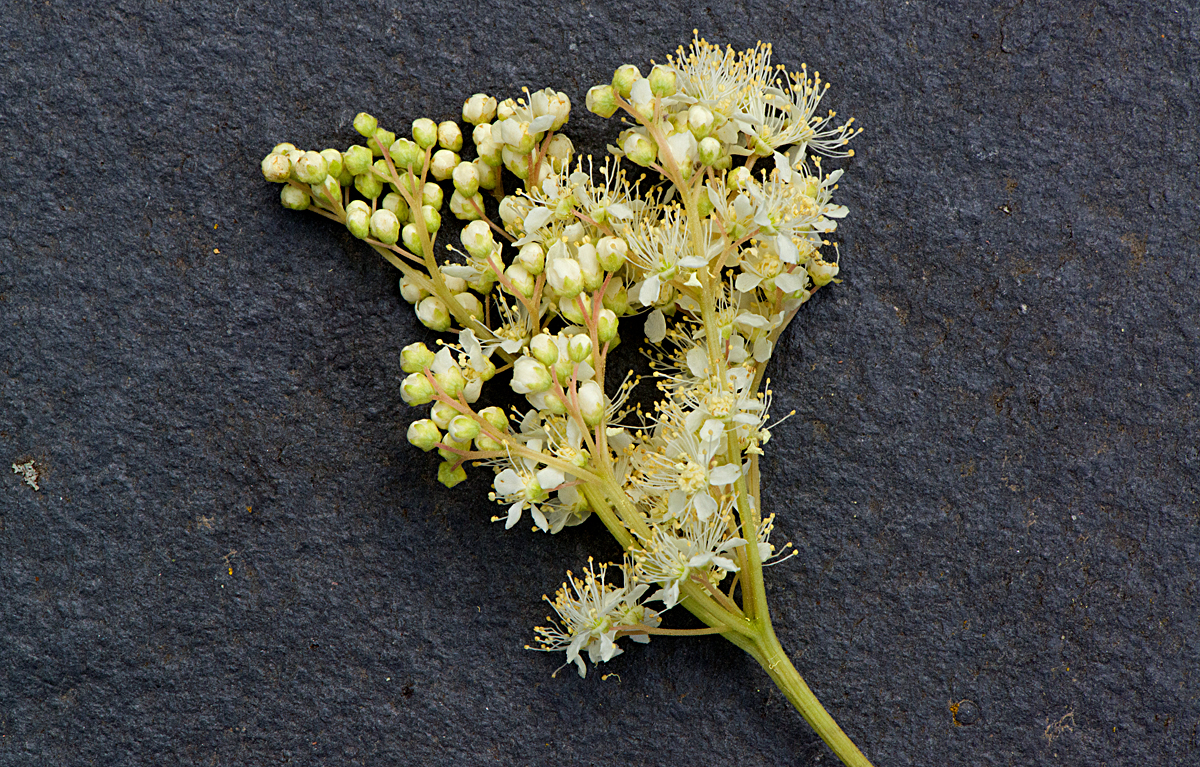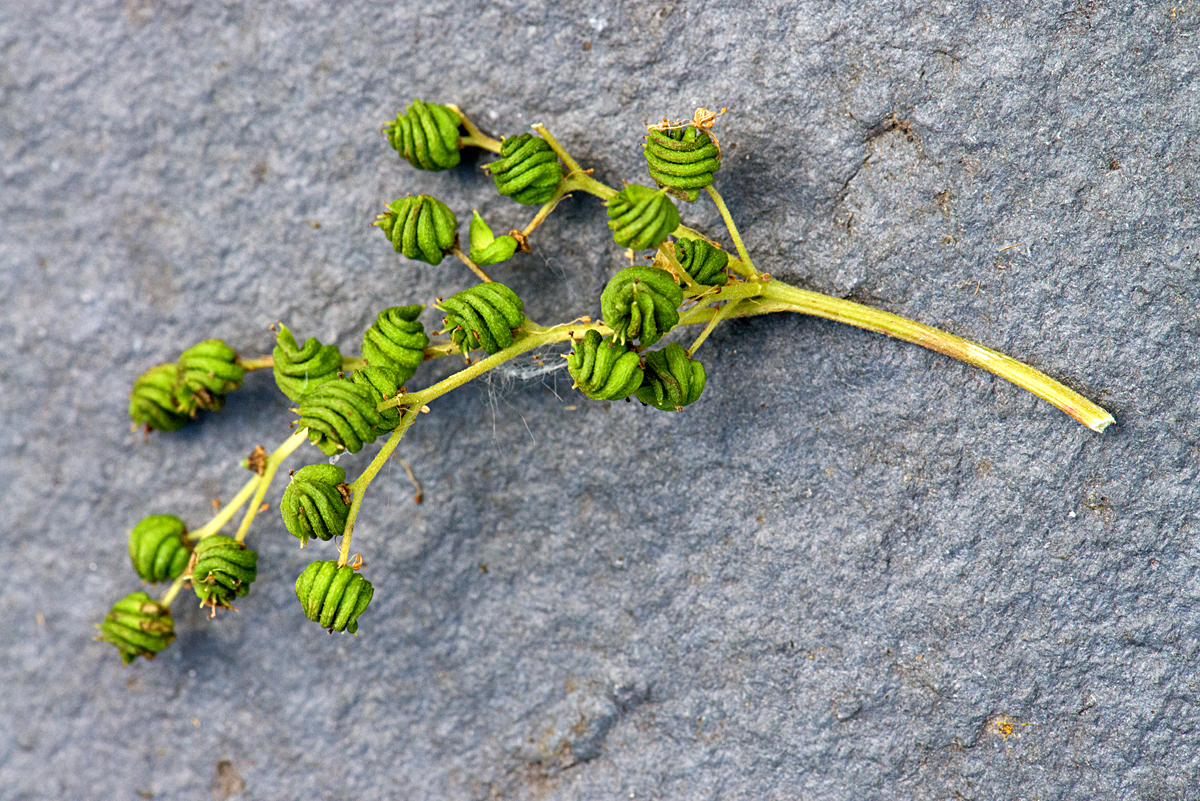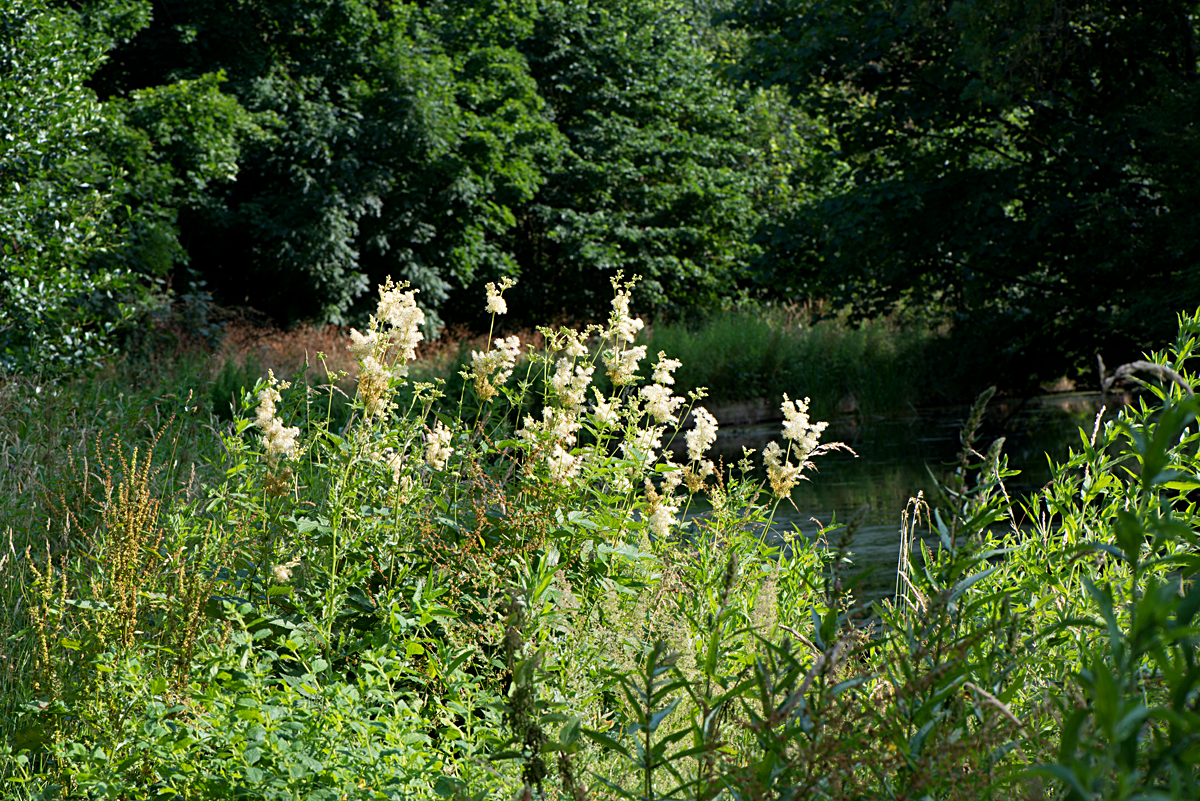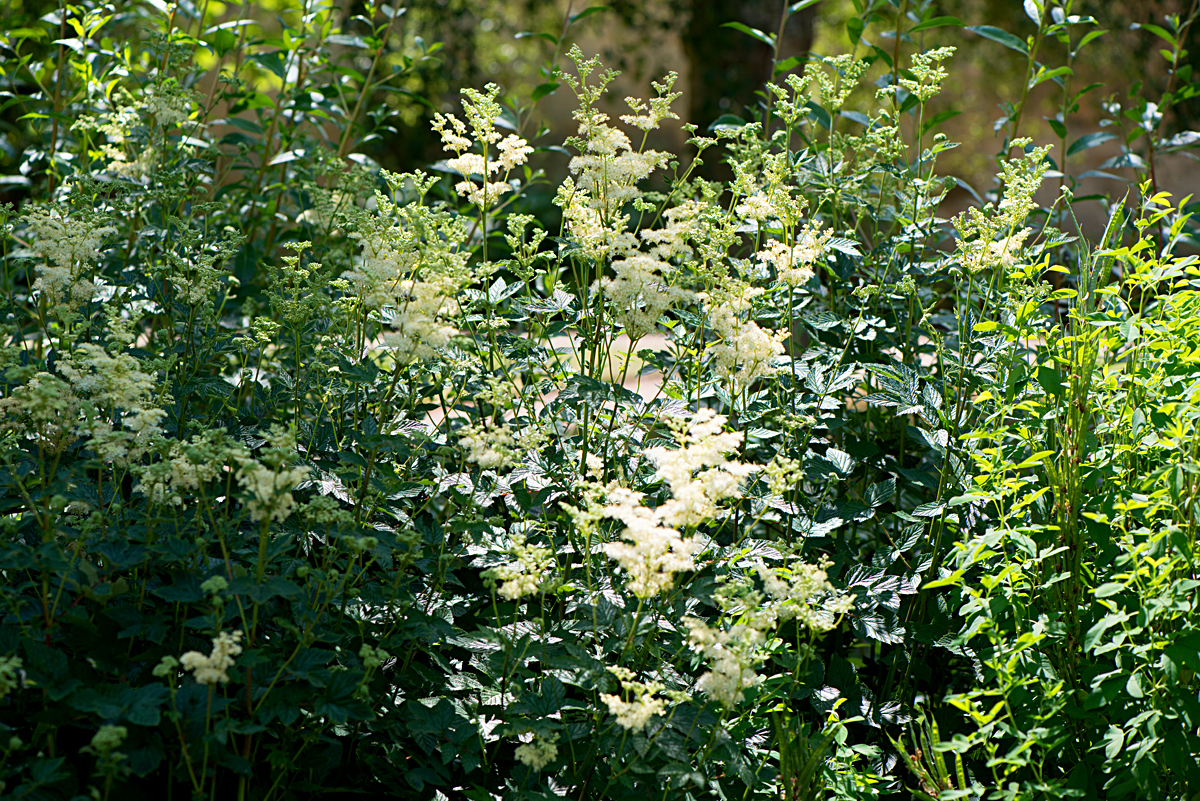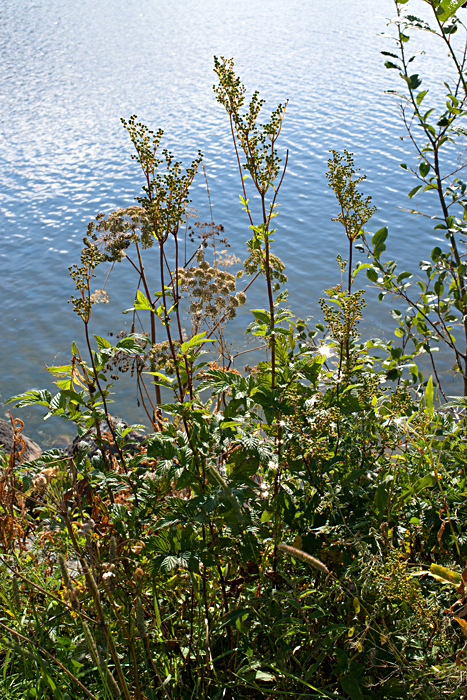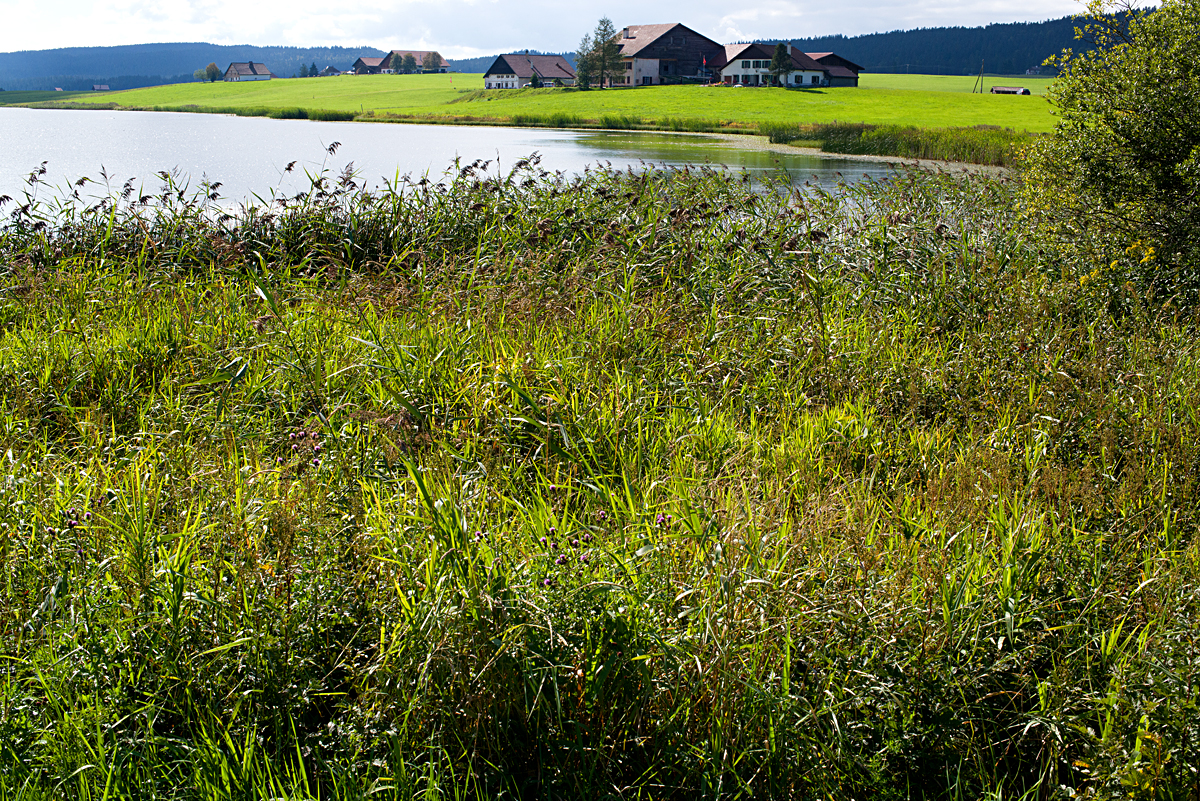about Aspirin and Platelets
The Fox Got You is an art and science project celebrating common plants at the origin of medicinal drugs (for an overview, go to the home page). Aspirin and Platelets is about the drug Aspirin, which originated from two plants, white willow and meadowsweet. This series is inspired by the work of the William Harvey Research Institute, in London, which was founded by John Vane, who won the Nobel Prize for discovering how Aspirin works.
The Institute’s research includes studying new drugs that protect against heart attacks and strokes, in particular drugs which prevent blood platelets from causing blockages in veins and arteries.
Artist Françoise Sergy was based at the Institute for this series. You will find more information about its research in the section Visits to Biomedical Research Laboratories.
about the white willow
White willow trees shimmering in the sunlight are a very familiar sight alongside Britain’s many rivers. The tree always grows by or near water: by streams, rivers, marshes and wet fens, usually on deep rich soils. It is often confused with the crack willow (Salix fragilis) with which it hybridises. The tree also copes with maritime exposure.
The white willow's Latin name is Salix alba. The name Salix is derived from a Latinised version of the Greek term isalos which describes the 'waterline', where the tree usually grows. Alba means white: The leaves’ undersides are covered in fine silky white hairs.
The white willow scientific classification is: Order - Malpighiales, Family - Salicaceae (willow family), Genus - Salix, Species - alba. There are 400 different willow species.
White willow is native to Europe, western and central Asia and North Africa. It is a large, fast growing deciduous tree, up to 30 M high. It is not very long-lived. It has an vast root system seeking lots of moisture and so it shouldn’t be planted near houses. Male and female flowers are produced on separate trees. The flowers are made into catkins and open in April and May. They are insect pollinated. The female catkins then develop capsules with tiny seeds embedded in cotton fluff, which helps with wind dispersal. Seeds have a very short life but the tree easily propagates from cuttings: Shoots root rapidly in contact with moist soil.
Salix alba 'Caerulea' is cultivated to make cricket bats. Other cultivars have attractive golden or orange shoots and the young stems are very flexible, ideal for basket making. The tree is also coppiced annually to make charcoal, including artist's charcoal.
about meadowsweet
Meadowsweet has several lovely common names: queen of the meadow, double lady of the meadow, mead wort, bridewort.
Its Latin name is Filipendula ulmaria. The name Filipendula comes from filum, meaning "thread" and pendulus, meaning "hanging". This is said to describe the way root tubers hang on the fibrous roots. Ulmaria means "elmlike", maybe because its individual leaves resemble those of elm trees.
Meadowsweet's scientific classification is: Order - Rosales, Family - Rosaceae (rose family), Genus - Filipendula, Species - ulmaria. The plant was previously named as Spiraea ulmaria.
Meadowsweet is native to Europe and temperate Asia. It is naturalised in North America. It is a herbaceous perennial, up to 1.2 M tall. It grows in sun or semi-shade, on wet or moist ground in swamps, marshes, fens, wet woods, damp meadows and by rivers: everywhere moist except on acid peat. It is sometimes seen colonising abandoned farmland. In the right condition it can slowly make large clumps, growing from fleshy rhizomes deep red and black in colour. Between June and August, small creamy white flowers, softly fragrant, form attractive shapes, called cymes. They are insect pollinated as well as being self-fertile. The seed capsules then twist around each other before falling to the ground.
Meadowsweet’s aromatic flowers have been used to flavour wine and beer. As a strewing herb in the past, it was scattered on the floor to perfume a room when crushed underfoot. It was also often included in bridal garlands and in church ceremonies. When added to pot-pourri, the fragrance becomes more and more pleasant over time.
about the drug Aspirin
Historically, Aspirin is associated with two plants: the willow and meadowsweet. Both contain salicylic acid which is present in many other plants, where it functions as a plant hormone. Throughout the centuries willow and meadowsweet have been used to relieve joint pain and manage fevers. In 1758 the English Reverend Edward Stone started a scientific experiment using white willow bark to treat a condition called the agues, a type of malaria common in Europe at the time, which caused fever and could be fatal. In 1763, he wrote a letter to the Royal Society, the famous learned society for science, detailing his experiment and its positive outcome. Despite Stone himself not being an established scientist, his work was published by the Royal Society and he has been known ever since as the discoverer of the active ingredient later to become Aspirin.
In the plants, several related compounds are present, including Aspirin’s active ingredient and its precursor, called salicin. In the 1830s chemists isolated salicin from plant material and found salicylic acid. This acid started being used to treat fever and rheumatism but soon fell out of favour because of its side effects: it badly irritated the mouth and stomach, unlike herbal remedies made from willow bark and meadowsweet.
The next chapter in the Aspirin’s story comes from the German dye industry. In the late 1880s, through a prescribing error at a pharmacy, it was discovered that a by-product of coal-tar distillation used in making dye had a fever reducing effect. The substance happened to be chemically related to salicylic acid, even though it had never been intended as a medical treatment. Luckily the patient who was administered it by mistake did not suffer any harm... The dye-making company Bayer began producing a similar compound on an industrial scale, something unheard of before. The new drug was named in 1899, using the then Latin name for meadowsweet: Spiraea, with an "A" in front to acknowledge the chemical process (acetylation) and an "in" at the end to make it roll off the tongue. Aspirin was born. The acetylation process altered salicylic acid and made it less of an irritant to the stomach. Within fifteen years of its launch, Aspirin became one of the most used drugs in the world and sales more than doubled during the 1918-1920 flu pandemic.
Bayer was transformed into one of the biggest chemical companies in Germany, in parts thanks to profits from the sales of Aspirin. In 1925, six German chemical manufacturers came together to form one large organisation, IG Farben. The cartel became associated with the Nazi Party and ended up bankrolling it to the tune of 80 million marks. It also funded and was directly involved in horrific concentration camps’ so called "scientific experiments". Senior executives were tried for war crimes at Nuremberg in 1948. IG Farben was then broken up by the Allied Powers and Bayer returned to pharmaceutical production, much as it did before the war. Aspirin continued to be one of its most profitable drugs.
In the 1950s, Paracetamol started competing with Aspirin. It had been found that Aspirin still caused damage to the stomach, even though much less so than salicylic acid, and people were looking for alternatives. Soluble Aspirin was developed, which had less side effects. In 1962 Ibuprofen came on the market, developed by Boots, the first new analgesic and anti-inflammatory agent for many years. Both Aspirin and Ibuprofen belong to a class of drugs called Nonsteroidal anti-inflammatory drugs (NSAIDs). Aspirin’s domination was on the wane.
In 1982, English pharmacologist John Vane won the Nobel Prize for discovering how Aspirin works. The molecule stops the production of prostaglandins, which are hormone-like compounds with many important functions. One of these functions is the regulation of inflammation. Prostaglandins play a wide ranging role in the body, which explains why Aspirin is now known to affect several, seemingly unconnected diseases.
Aspirin’s three main modes of action are: Firstly, in very large doses, it acts on the swelling, heat and pain of inflammation, such as in rheumatism. Here it has largely been replaced by other drugs, because of its damaging side effects on the stomach lining. Secondly, in average doses, it inhibits pain, such as for headaches. This is still the most common use of the drug. Thirdly, in small doses, Aspirin helps to "thin the blood" and prevent heart attacks and strokes. More recently it has also been found that Aspirin reduces the risk of some cancers and may have a role to play in dementia. The story of this wonder drug is set to continue well into the 21st century.
For a longer version of this article, please view the pdf file.
